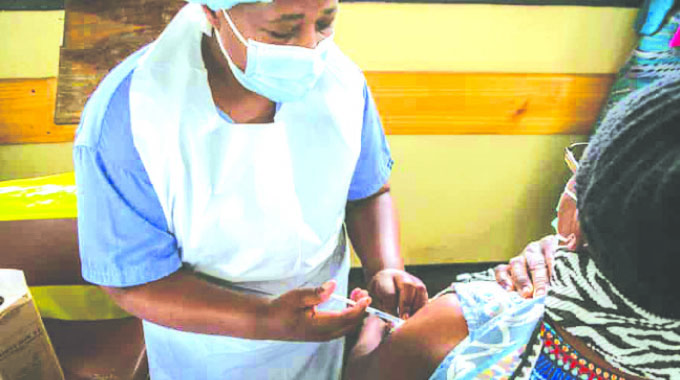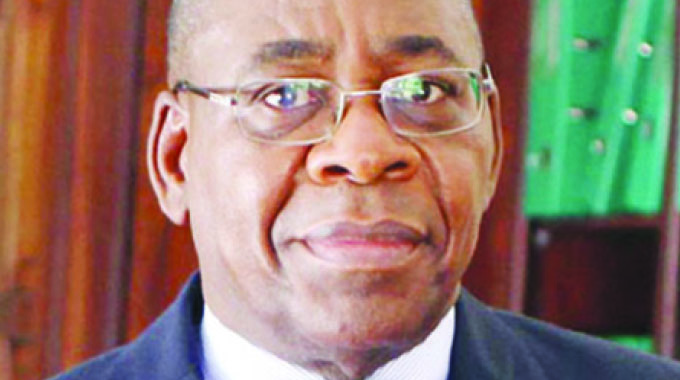How vaccines help reduce deaths

Roselyne Sachiti
Health& Society Editor
When the first case was reported in Wuhan City, China, many around the world did not think the novel virus would halt everything, freeze life and take away everyday basic freedoms people normally enjoy.
Back then, many viewed Covid-19 as a Chinese problem, even the most powerful nations seemed to care less.
Why would they care when their health systems were top notch? They had everything from human capital, medicines to equipment and plenty money.
Yet, when Covid-19 started to spread, crossing boarders creating a global health crisis, it ignored all these privileges, everyone was equal.
At the same time some powerful nations still chose to look the other way, still deeming it a Chinese problem and playing the blame game.
When it started tearing apart even the strongest health systems and economies in the global west, Covid-19 finally got attention.
The huge monster stared policy makers, scientists, epidemiologists, among others, disrupting their everyday schedules as they had to come up with a solution to reduce transmission and deaths in the shortest possible time.
Non-pharmaceutical interventions like lockdowns to prevent spread, social distancing, washing hands with soap and running water, and sanitising were put in place and remain recommended by the World Health Organisation (WHO).
Borders closed, airplanes stopped flying, travel between countries by road suspended, young children stopped going to school, employees worked from home as nations tried to protect their populations.
Time froze.
Scientists worked day and night to find a vaccine for the novel disease and melt the “frozen time” and help countries return to normal.
Covid-19 being a brand new virus, even the most experienced people in the world had only known its sequence for one year, yet everyone was looking up to them for a solution.
They worked long hard hours to save the world. On December 31 2020, WHO listed the Pfizer/BioNTech vaccine for emergency use ; two AstraZeneca/Oxford Covid-19 vaccines on February 15 2021, produced by AstraZeneca-SKBio (Republic of Korea) and the Serum Institute of India; and COVID-19 vaccine Ad26.COV2.S developed by Janssen (Johnson & Johnson) on March 12 2021.
On May 7, 2021 WHO also listed the Sinopharm Covid-19 vaccine for emergency use, giving the green light for this vaccine to be rolled out globally. The Sinopharm vaccine is produced by Beijing Bio-Institute of Biological Products Co Ltd, subsidiary of China National Biotec Group (CNBG) and being administered in Zimbabwe.
On June 1, 2021, WHO validated the Sinovac-CoronaVac Covid-19 vaccine for emergency use, giving countries, funders, procuring agencies and communities the assurance that it meets international standards for safety, efficacy and manufacturing. The vaccine is produced by the Beijing-based pharmaceutical company Sinovac and also being administered in Zimbabwe. The WHO’s Emergency Use Listing (EUL) would open the door for countries to expedite their own regulatory approval processes to import and administer the vaccine.
Emergency use listing
According to WHO, the EUL procedure assesses the suitability of novel health products during public health emergencies.
The objective is to make medicines, vaccines and diagnostics available as rapidly as possible to address the emergency, while adhering to stringent criteria of safety, efficacy and quality.
The assessment weighs the threat posed by the emergency, as well as the benefit that would accrue from the use of the product against any potential risks.
“The EUL pathway involves a rigorous assessment of late phase II and phase III clinical trial data as well as substantial additional data on safety, efficacy, quality and a risk management plan,” WHO says.
“These data are reviewed by independent experts and WHO teams who consider the current body of evidence on the vaccine under consideration, the plans for monitoring its use, and plans for further studies.”
It further advises that as part of the EUL process, the company producing the vaccine must commit to continue to generate data to enable full licensure and WHO pre-qualification of the vaccine.
“The WHO prequalification process will assess additional clinical data generated from vaccine trials and deployment on a rolling basis to ensure the vaccine meets the necessary standards of quality, safety and efficacy for broader availability,” says WHO.
As professor of Clinical Investigation and senior attending physician at The Rockefeller University, New York, US, Sara Schlesinger explained during a HIV Research for Prevention (HIVR4P) Virtual Journalist Fellows Session titled: “Covid vaccines and treatments” in January this year, the most remarkable thing is that in less than a year, there was a 95 percent efficacious vaccine.
“That in my mind is nothing short of a full blown miracle,” she said. “Everyone is reluctant to speak so enthusiastically about that miracle for fear of people letting their guard down.”
Prof Schlesinger further said: “You have a sort of dichotomy of this brand new catastrophe virus that can be fought with measures my grandparents, who were physicians and graduated in the 20s, advocated.
“Yet we have managed through our biomedical research community to develop and deploy a vaccine, more than one vaccine, many vaccines.”
Prof Schlesinger said there has been huge progress in identifying the virus, sequencing it, making the vaccine to combat the virus, and while doing that figuring out what works medically both in terms of treatments and less technical kinds of prevention.
“While these trials were put together rapidly, they have been executed, in my view, brilliantly,” said Prof Schlesinger.
“What we know is these vaccines are very safe. I keep getting questions from colleagues, friends, people at work. The question is ‘are they safe since they have been developed so quickly?’ From what we know we have been very fortunate that these vaccines are very safe,” she said back then.
Prof Schlesinger said another question people usually ask is “do the vaccines work and what do they prevent?”
“No vaccine that I know of completely shuts down a virus when you encounter it after the vaccine,” she said. “That is a challenge with an HIV vaccine because of things that are special about HIV. Fortunately, Covid-19 is more like the traditional viruses for which we are protected with vaccines among them measles rubella. So, if you encounter a small amount of virus after you have been vaccinated, your body wakes up and remembers the key things about immune responses and makes an immune response and protects you.
“No one would take a vaccine that has been developed under these circumstances if we were not in a pandemic. We would wait for more safety data, but we are in a pandemic. One has to think very hard about what the risks are for the individual from the vaccine and from acquiring Covid-19. What are the risks from the vaccine and what are the risks from acquiring Covid-19?”
Vaccines impact
While the vaccines where developed in the shortest imaginable time, they have helped prevent adverse effects of Covid-19. For example, according to the Commonwealth Fund, vaccination campaign markedly curbed the United States pandemic. The Commonwealth Fund says without a vaccination programme, by the end of June 2021 there would have been approximately 279 000 additional deaths and up to 1,25 million additional hospitalisations in the United States. It further says if the US had achieved only half the actual pace of vaccination, there would have been nearly 121 000 additional deaths and more than 450 000 additional hospitalisations.
“If there had been no vaccination programme, daily deaths from Covid-19 potentially would have jumped to nearly 4 500 deaths per day during a second “2021 spring surge” — eclipsing the observed daily peak of 4 000 during the first 2021 winter surge,” the Commonwealth Fund added.
In the United Kingdom, a “Covid-19 vaccine surveillance report — week 27” released by Public Health England revealed that the vaccination programme directly averted over 46 300 hospitalisations.
“Analysis on the direct and indirect impact of the vaccination programme on infections and mortality, suggests the vaccination programme has prevented between 7.5 and 8.9 million infections and between 29 000 and 31 800 deaths,” said Public Health England.
According to Hindutimes, fewer hospitalisations (9,8 percent) and deaths (0.4 percent) were reported in people who experienced breakthrough Covid-19 infections, mostly caused by the Alpha variant in north India and the Delta variant elsewhere, after two doses of vaccine, highlighting the fact that vaccination does reduce hospital admission and mortality.
With more vaccines being administered for countries to reach herd immunity also known as population immunity, it is important to make the right choice of following the science and ignore fake news, myths and misconceptions.
◆ Feedback – [email protected] or [email protected]. Twitter @RoselyneSachiti








Comments